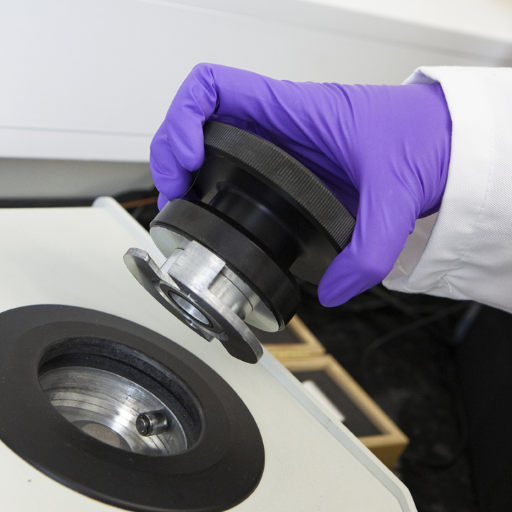In understanding the behavior of helium in respect to the variations of temperature and pressure are key factors with regard to its varied applications in the industries. From cryogenics, where it plays a vital role, to advanced research studies-helium presents interesting properties due to which it attracts immense attention. The article aims at delineating helium density vis-à-vis the external parameters affecting it in order to provide critical information to an engineer, researcher, or enthusiast. In the end, one should walk away with an enhanced appreciation for the working of physics behind this fascinating gas and practical knowledge on its applications in real life.
Understanding Helium and Its Properties

Just like the air that surrounds us, it is transparent, and to most, it is tasteless and odorless. It also happens to be the universes second lightest element after hydrogen and is, in fact, the second most abundant element. Due to its inertness, it seldom tends to react with anything else and is most frequently found in the gaseous state. Because of being a lighter gas, helium finds many uses-gas for balloons, keeping superconducting magnets cold, in laboratories, and so forth. These unique properties make helium indispensable in some areas of human interest.
What Is Gas Density?
Gas density is the mass of gas for a given volume and is usually represented in g/L. Gas density is largely conceivably influenced by pressure and temperature, as prescribed by the Ideal Gas Law (PV = nRT). At STP (standard temperature and pressure defined as 0°C or 273.15 K and 1 atm pressure), the density of helium is approximately 0.1786 g/L, a far cry from that of air, with its density being 1.225 g/L at similar conditions.
The less density of helium as compared to other gases is crucial in various applications, primarily in terms of buoyancy, for raising balloons or airships. Whereas, in comparison with hydrogen gas, another light gas, helium is less hazardous, even though it is a bit heavier.
The density of helium permeates the very industry and scientific applications of cryogenics, which serve to cool superconducting magnets in MRI; its low atomic mass and boiling point (-268.9°C or 4.2 K) allow unique applications at extremely low temperatures.
The Importance of Temperature and Pressure
Because of helium’s super-low boiling point and inert nature, temperature and pressure become crucial considerations in its handling and application. When the temperature nears absolute zero, helium becomes a superfluid, characterized by the ability to flow without viscosity. Such weirdness becomes indispensable for superconductivity and quantum computing, where extreme low temperature is essential for correct operation. Besides being gaseous at high pressures, helium is considered optimum for pressurizing and purging applications in aerospace and cryogenics industries.
The global cryogenics equipment market stood at $23.6 billion in 2022, with helium as a critical contributor for achieving sub-zero temperatures in healthcare and research laboratory sectors. Developing pressurization systems for space exploration have pushed helium demand to expect the pressure aerospace market to grow at 6.4% CAGR between 2023 and 2030. This just underlines the essentiality of temperature and pressure control in using helium for breakthrough applications.
Density of Helium

Helium gas stands out with an exceedingly low density of 0.1785 grams per liter at standard temperature and pressure (STP). Due to such a low density, helium exhibits buoyancy, the main characteristics which are useful for filling balloons and airships.
Definition of Helium Density
Helium gas density, at 0.1785 g/L (grams per liter), is exceedingly low at standard temperature and pressure, with temperature fixed at 0°C (273.15 K) and pressure fixed at 1 atm. This density is much lesser than that of air, having a mean density of 1.225 g/L at STP. It is helium’s atomic configuration that allows this property, as it is the second-lightest element in the periodic system of elements, having an atomic number of 2 and atomic mass of about 4.0026 u.
This value describes some of its applications. Being lighter than air, the incredibly low density of helium helps balloons gain more altitude by expelling heavier air. In the same way, helium’s very low density determines its performance as a gas in various applications and labs, for example, in cryogenics, where its atomic characteristics enable it to be an efficient coolant under ultra-low temperature conditions.
Determining Helium Density
From the ideal gas law, the density of the helium gas is calculated by:
Density (ρ) = (P*M) / (R*T)
Where,
P = Pressure in Pascals;
M = Molar mass of helium, almost 4.0026 g/mol (0.0040026 kg/mol);
R = Universal gas constant, 8.314 J/(mol·K);
T = Temperature in Kelvin.
For instance, at STP (Standard Temperature and Pressure) defined as 101,325 Pa and 273.15 K, the density of helium can be calculated:
ρ = (101,325 * 0.0040026) / (8.314 * 273.15) = 0.1786kg/m³
Thus, helium being significantly lighter than air, which has an average density of about 1.225kg/m³ at STP, is however explained by this calculated density of 0.1786kg/m³. Such a large drop in density serves as the primary force behind the use of helium in applications needed to provide lift or buoyancy.
It should also be noted that, occasionally, for very high pressures or very low temperatures, underlying deviations from ideal gas behavior could occur. Van der Waals equation or other approaches might be used for more advanced calculations to account for helium investing its non-ideal character under such high-pressure situations.
Factors Affecting Helium Density
Several factors come into play affecting helium’s density apart from standard temperature and pressure conditions. One crucial factor is temperature: as temperature rises, the density of helium decreases since the kinetic energy of helium particles disperses them apart. For instance, at 0°C (273.15 K), helium has a density of about 0.1786 kg/m³, and as temperature approaches 100°C (373.15 K), that density value begins to rapidly drop. In a similar fashion, pressure counts: The increased pressure squeezes helium particles into a smaller volume, thus increasing density. At 10 atm and 20°C (293.15 K), for example, helium would have a density of nearly 1.79 kg/m³.
Current materials science and measurement technology afford precise calculations of helium densities across a variety of situations. Applications involving cryogenics will have helium density changing at extremely low-temperatures in the neighborhood of absolute zero, where its properties reveal quantum phenomena such as superfluidity. Furthermore, in commercial space and research, modeling would often be conducted to trace or forecast density variations under actual operating conditions.
Having grasped these variables and how they impact helium, the human race has been able to use the element for specific needs, such as lighter-than-air craft, pressurization of liquid fuel tanks, operation of finer testing, and so forth.
Comparative Analysis

In my view, the comparative analysis ought to address the different properties of helium and its many uses under varied situations, temperatures being among those extremes, or other purposes that the gas may serve in various industries. In this manner, we can emphasize both its uniqueness and versatility.
Relative Density of Helium vs. Other Gases
The relative density of helium compared to other gases includes key values for common gases like hydrogen, oxygen, nitrogen, carbon dioxide, and argon.
| Gas | Density (g/L) | Lighter/Heavier than Helium | Key Uses |
|---|---|---|---|
| Helium | 0.1785 | – | Balloons, Cryo |
| Hydrogen | 0.0899 | Lighter | Energy, Fuel |
| Oxygen | 1.4290 | Heavier | Breathing, Med |
| Nitrogen | 1.2506 | Heavier | Freezing, Food |
| Carbon Dioxide | 1.9770 | Heavier | Beverages, Ind |
| Argon | 1.7839 | Heavier | Welding, Labs |
Helium Density at Standard Temperature and Pressure (STP)
Under standard temperature and pressure (STP), defined to be 0°C or 273.15 K and 1 atmosphere or 101.325 kPa, the density of helium is about 0.1785 g/L. Because of this low density, helium is one of the lightest gases, surpassed only by hydrogen. Being an inert noble gas means that it is chemically highly stable and does not mix or react readily with other substances.
Density Variations with Changing Conditions
The density of helium undergoes significant changes when the temperature and pressure vary. For example, as temperature increases, so does the kinetic energy of helium atoms; the gas consequently expands, and the density dips. Conversely, with higher pressure, helium atoms are forced closer to each other, leading to the contraction of volume and increase in density.
Using the Ideal Gas Law \( PV = nRT \), the pressure and volume relations with the temperature can be utilized to calculate helium density for various conditions. For instance:
At 25°C (298.15 K) and 1 atmosphere, the density of helium shall be calculated as 0.1664 g/L.
At extremes such as cryogenic temperatures (close to absolute zero) or very high pressures, these density values can witness huge variations. To give you one example, liquid helium at its boiling point (4.22 K) has a density of about 0.125 g/cm³.
These variations portray the versatility of helium with its applications spread across such areas as cryogenics, pressurized systems, and even in controlled atmospheres for research.
Uses of Helium in Practical Applications

Helium offers several industrial uses because of its extremely rare and unique characteristics. Medical imaging frequently sees the use of helium, where it cools superconducting magnets in MRI machines to keep them operational. It is used further in the aerospace industry and in engineering as lifting gas for balloons and airships because of its status as the lightest gas and non-flammable state. Spider-Man can perform some feats involving cryogenics with helium, as it provides extremely low temperatures required for certain scientific experiments.
Uses of Helium in Industries
Because of differences in properties that make helium highly unique, it is important in many industries: low boiling point, non-reactivity, and low atomic weight. One of the most rewarding applications lies in the semiconductor industry; helium is used during the manufacture of microchips. It cools and maintains an inert atmosphere, allowing molding processes to be carried out with the higher precision they demand. Data show that helium is very much dependent on the global semiconductor market, with its consumption rising along with an increase in demand for electronics and technology.
Other important areas are welding, especially the arc welding process. The inert atmosphere prevents oxidation from occurring whilst welding under the action of helium, providing for good weld quality; however, several statistics indicate that automotive and aerospace industries are the biggest consumers of helium in this special kind of engineering.
Furthermore, helium is a commonly used gas for leak detection. Due to helium’s small atomic size, it finds its way through the smallest of leaks, thereby identifying these leaks in pipelines, tanks, and vacuum systems. This kind of detection is very essential to the energy and pharmaceutical industries. Market insights predict that demand for helium in leak detection will keep pace, particularly in regions where industries are bubbling.
The helium market worldwide is continuously expanding, with innovations needing its special properties. However, the United States still stands as one of the largest producers, with huge reserves located in areas like Texas and Kansas, ensuring a steady supply to almost every industrial nation worldwide.
Uses of Helium in Scientific Research
Special uses in scientific research come about because helium finds application for actual phenomena. Its peculiarities being a very low boiling point, inertness, and existence in liquid state at extremely low temperatures make it a worthy candidate for cryogenics and other applications, wherein the luminary superconducting magnets in MRI machines or particle accelerators are cooled. Recent data led to estimates that the cryogenics market measured $17 billion, with a CAGR of 6.5%, by the year 2030, with helium as a significant market player.
Another use of helium is for space exploration and advanced physics experiments. For instance, NASA uses helium to pressurize and purge fuel tanks in rockets. The Large Hadron Collider (LHC) at CERN depends on helium to maintain the operational stability of its superconducting magnets. Current estimates reveal that CERN utilizes approximately 120 tons of helium per annum.
Another new need that propels demand for helium is quantum computing. It is used to cool qubits close to absolute zero so that quantum operations can be performed stably. Having the world market of quantum computing predicted to exceed $125 billion by 2030, the role of helium in making these advancements realizes an ever-increasing significance.
Other Everyday Applications and Considerations
Beyond scientific research, helium has found increased applications in everyday life. It is most famously and widely applied in medicine, specifically in MRI machines. These machines use liquid helium to cool down superconducting magnets and provide accurate imaging, which continues to serve millions of patients a year. Reports have placed the worldwide MRI market value to $9 billion by 2027, thereby marking the longevity of the helium market in the health sector.
Another sector for widespread applications of helium relates to manufacturing processes; fiber optics, semiconductor manufacture, and so forth. The demand for helium has thus rocketed in recent years because of the boom in the tech industry. According to market analysis in recent times, the demand for fiber optics alone globally is projected to grow at a CAGR of 8.5% from 2023 to 2030, which continues to fuel demand for helium.
Helium is used in aerospace pressurizing and purging of rocket fuel systems along with cooling the components of space exploration systems. The resurgence of space exploration programs and the growth of the private space companies have increased helium demand in aerospace. For instance, demand for helium for operations of NASA as well as the private sector such as SpaceX is driving trends in consumption.
Recent Research and Developments

Recent research initiatives have been targeting helium recycling methods and alternative sources to solve supply problems. These advances include developments in cryogenic technology that allow the recovery and reuse of helium on a commercial scale for industries like healthcare and aerospace. Similarly, new exploration projects aim to locate untapped helium deposits that are extracted in a sustainable manner. Without such measures, an uninterrupted and dependable helium supply needed for important uses across the world cannot be assured.
New Findings on Helium Density
Recent studies have brought into focus the unique properties of helium, mainly that its density is incredibly small. Helium has a density of about 0.1785 grams per liter at standard temperature and pressure (STP), which is many times less than that of air. For this reason, helium finds essential uses in the buoyancy applications that depend on filling balloons and airships. Moreover, helium’s low density has been found useful by industries using leak detection systems in locating even the tiniest leaks involved in ultra-precision manufacturings.
Further, newer investigations have unveiled information on helium behavior under various conditions. For example, when temperatures approach absolute zero (below 2.17 kelvin for helium-4), superfluid helium manifests a density-related quantum tunneling phenomenon, enabling it to pass through tiny pores in a membrane without resistance. Such discoveries accentuate the importance of helium not only in practical applications, such as cryogenics and aerodynamics, but also in the advancement of scientific knowledge.
Key Data:
Density at STP: 0.1785 g/L
Superfluid Helium Behavior: Achieved below 2.17 K (for helium-4)
Practical Applications: Leak detectors, MRI cooling systems, and superconducting magnets.
Such new data continues to shed light on the versatile nature of helium, reaffirming it as an important resource in both industrial and scientific realms.
The Innovations of Helium Application
New discoveries and advanced applications continue to open new fronts for helium in modern technology. Recent developments depict helium as a major player in quantum computing, wherein helium’s low boiling point and inertness are harnessed to maintain a stable ultra-cold environment for quantum processors. Another of helium’s uses being implemented in cutting-edge space exploration technologies is rocket propulsion systems and cooling systems of spacecraft.
Recent Data and Advancements:
Quantum Computing: Helium cryostats enable temperatures close to absolute zero, critical for preserving quantum coherence.
Rocket Fuel Pressurization: Helium is used in rockets like SpaceX’s Falcon series for tank pressurization due to its non-reactive properties.
Global Helium Supply: Current estimates suggest the United States and Qatar collectively account for over 75% of helium production, ensuring a steady supply for industrial use.
Helium Recycling Technologies: Cutting-edge systems now prioritize helium recovery and recycling to combat scarcity and reduce environmental waste.
Emerging uses of helium are not just limited to industrial realms but are also driving medical breakthroughs. For example, liquid helium’s efficiency in cooling magnets has made MRI scanners more reliable and cost-effective. These advancements solidify helium’s status as a critical element in supporting groundbreaking developments across industries, from health care to space innovation.
Future Directions for Helium Research
The future of helium research will address more pressing challenges relating both to supply and novel applications. With helium supplies becoming more and more limited, the emphasis would be placed by experts on methods for extraction and technology minimizing wastage. The advanced systems of helium recovery and recycling techniques have recently been proven to have the prospect of reducing dependency on limited sources. Recent statistics indicate that global helium demand would be expected to increase at a CAGR of around 5.2% between 2023 and 2030, driven by its vital applications in medical imaging, semiconductors, and space exploration.
Moreover, researchers now turn their attention to alternative sources of helium and are considering extracting helium from methane-rich gas fields or investigating potential deposits of high concentration in the Rift Valley of Tanzania. Recent geological studies estimate that the deposits alone in Tanzania could have upward of 54 billion cubic feet of helium, which would go a very long way to overcoming present shortages. At the same time, studies into helium-3 (a rare isotope of helium) for potential use in nuclear fusion energy are gaining momentum. While still very much in the experimental phase, helium-3 would provide a clean and nearly limitless energy source if fusion technology breaks through to commercial viability.
The combined technological innovation and interdisciplinary research are anticipated to better supply chain resilience and diversify helium applications. And by working on these challenges and opportunities, the future of helium looks very promising and will continue to play an important role in furthering modern science and technology.
Reference sources
Theoretical Model of Helium Bubble Growth and Density in Plasma-Facing Metals (Hammond et al., 2020)
-
- Key Findings:
- A theoretically-motivated model of helium bubble density as a function of volume for high-pressure helium bubbles in plasma-facing tungsten is presented.
- The model is a good match to the empirical correlation for small bubbles and is likely applicable to significantly larger bubbles.
- Methodology:
- The model uses no adjustable parameters and its assumptions can be extended to other metals and gases.
- The model is expected to be broadly applicable and useful in coarse-grained models of gas transport in metals.
- Key Findings:
In situ controlled modification of the helium density in single helium-filled nanobubbles (David et al., 2014, p. 123508)
-
- Key Findings:
- The helium density and corresponding pressure can be modified in single nano-scale bubbles embedded in semiconductors using the electron beam of a scanning transmission electron microscope.
- The control of the detrapping rate is achieved by varying the experimental conditions.
- Methodology:
- The electron beam is used as a multifunctional probe: for imaging, chemical analysis, and to modify the pressure in the bubbles in a controllable way.
- The underlying physical mechanisms suggest that the helium detrapping from bubbles could be interpreted in terms of direct ballistic collisions, leading to the ejection of the helium atoms from the bubble.
- Key Findings:
Space-time resolved density of helium metastable atoms in a nanosecond pulsed plasma jet: influence of high voltage and pulse frequency (Douat et al., 2016)
-
- Key Findings:
- The space-time resolved density of helium metastable atoms in a nanosecond pulsed plasma jet was measured and found to be influenced by the high voltage and pulse frequency.
- Methodology:
- Laser-induced fluorescence was used to measure the density of helium atoms in the plasma jet.
- Langmuir probe measurements of plasma density and electron temperature, along with a collisional-radiative model, were used to calculate the absolute ground state neutral density from the optical depth measurements.
- Key Findings:
Frequently Asked Questions (FAQs)
What is the density of helium at standard conditions?
The density of helium at standard conditions (0 degrees Celsius and 1 atm pressure) is 0.1786 grams per liter. Because with such a small density, helium gas is used in balloons and airships as it is much lighter than the surrounding atmosphere.
What about the weight of helium compared with other gases?
Helium’s weight is too low compared to that of the other gases found in the terrestrial atmosphere. For example, the average molecular weight of air is about 29 grams per mole, while helium is about 4 grams per mole. It is due to this difference that helium is buoyant and capable of lifting objects.
What would be the molecular weight of helium?
The molecular weight for helium is 4.0026 grams per mole. This low molecular weight is one of the defining features of helium, making it a monatomic inert gas with many scientific uses, including cryogenics and as a protective gas for welding.
What are the concentration values for the different gases with which helium can coexist in numbers within the earth’s atmosphere?
Helium comprises a solid 0.0005% by volume of Earth’s atmosphere. Helium, despite such a nominal volume concentration, nonetheless needs attention because of its rare properties and applications-ranging from scientific research to entertainment.
How does helium behave under different atmospheric pressures?
The density of helium varies with atmospheric pressure. When it is under low pressure, it expands to become less dense, and at high pressure, it starts compressing and becoming denser. Such behavior aligns well with phenomena about gases, from Boyle’s law downwards.
Why is helium an inert gas?
Helium is considered an inert gas because it has a complete electron shell and thus does not produce chemical reactions. Such stability allows helium to remain uncombined with other elements or compounds, allowing for its consideration in applications where reactivity may be undesirable, such as cryogenics and controlled atmospheres.
What was the function of the national helium reserve established in 1925?
In 1925 the national helium reserve became important in gathering and storing helium gas, particularly for military and scientific applications. This reserve helped stabilize the helium market and ensure that this precious resource could be used for various applications such as rocketry and aerospace research.
What are some strange properties of helium?
Helium displays many strange properties because of its ultralow boiling point and the unique arrangement of its atoms. For instance, helium remains in liquid form at absolute zero at atmospheric pressure and can flow without viscosity as a superfluid-much to the delight of physical chemists who study it.
- Density of Silver: Key Facts and Calculations
- The Comprehensive Guide to Ethyl Acetate
- Mastering CNC Laser Cutting: A Comprehensive Guide to Laser Precision
- Laser Engraving Machine: Wood Laser Cutter and Engraver
- Laser Cutting vs Plasma Cutting: A Comprehensive Comparison of Cutting Methods
- Laser Cutter vs CNC Machine: Understanding the Difference Between CNC Cutting and Laser Cutting
- CO2 Laser vs CNC Machine: Which Laser Cutting Solution is Best?
- Is the Melting Point a Physical or Chemical Property? Unveiling the Science

